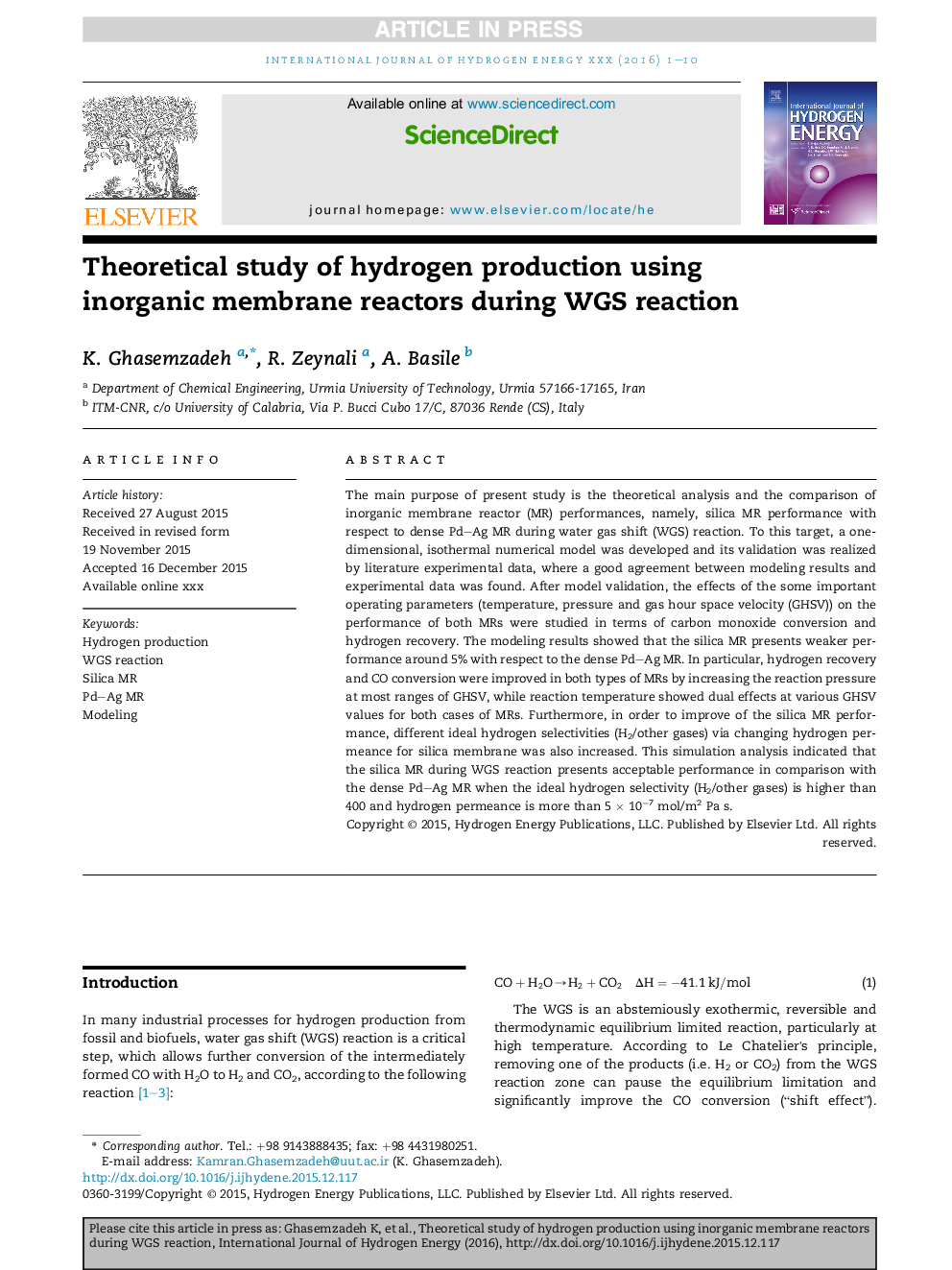| Article ID | Journal | Published Year | Pages | File Type |
|---|---|---|---|---|
| 7710982 | International Journal of Hydrogen Energy | 2016 | 10 Pages |
Abstract
The main purpose of present study is the theoretical analysis and the comparison of inorganic membrane reactor (MR) performances, namely, silica MR performance with respect to dense Pd-Ag MR during water gas shift (WGS) reaction. To this target, a one-dimensional, isothermal numerical model was developed and its validation was realized by literature experimental data, where a good agreement between modeling results and experimental data was found. After model validation, the effects of the some important operating parameters (temperature, pressure and gas hour space velocity (GHSV)) on the performance of both MRs were studied in terms of carbon monoxide conversion and hydrogen recovery. The modeling results showed that the silica MR presents weaker performance around 5% with respect to the dense Pd-Ag MR. In particular, hydrogen recovery and CO conversion were improved in both types of MRs by increasing the reaction pressure at most ranges of GHSV, while reaction temperature showed dual effects at various GHSV values for both cases of MRs. Furthermore, in order to improve of the silica MR performance, different ideal hydrogen selectivities (H2/other gases) via changing hydrogen permeance for silica membrane was also increased. This simulation analysis indicated that the silica MR during WGS reaction presents acceptable performance in comparison with the dense Pd-Ag MR when the ideal hydrogen selectivity (H2/other gases) is higher than 400 and hydrogen permeance is more than 5 Ã 10â7 mol/m2 Pa s.
Related Topics
Physical Sciences and Engineering
Chemistry
Electrochemistry
Authors
K. Ghasemzadeh, R. Zeynali, A. Basile,
